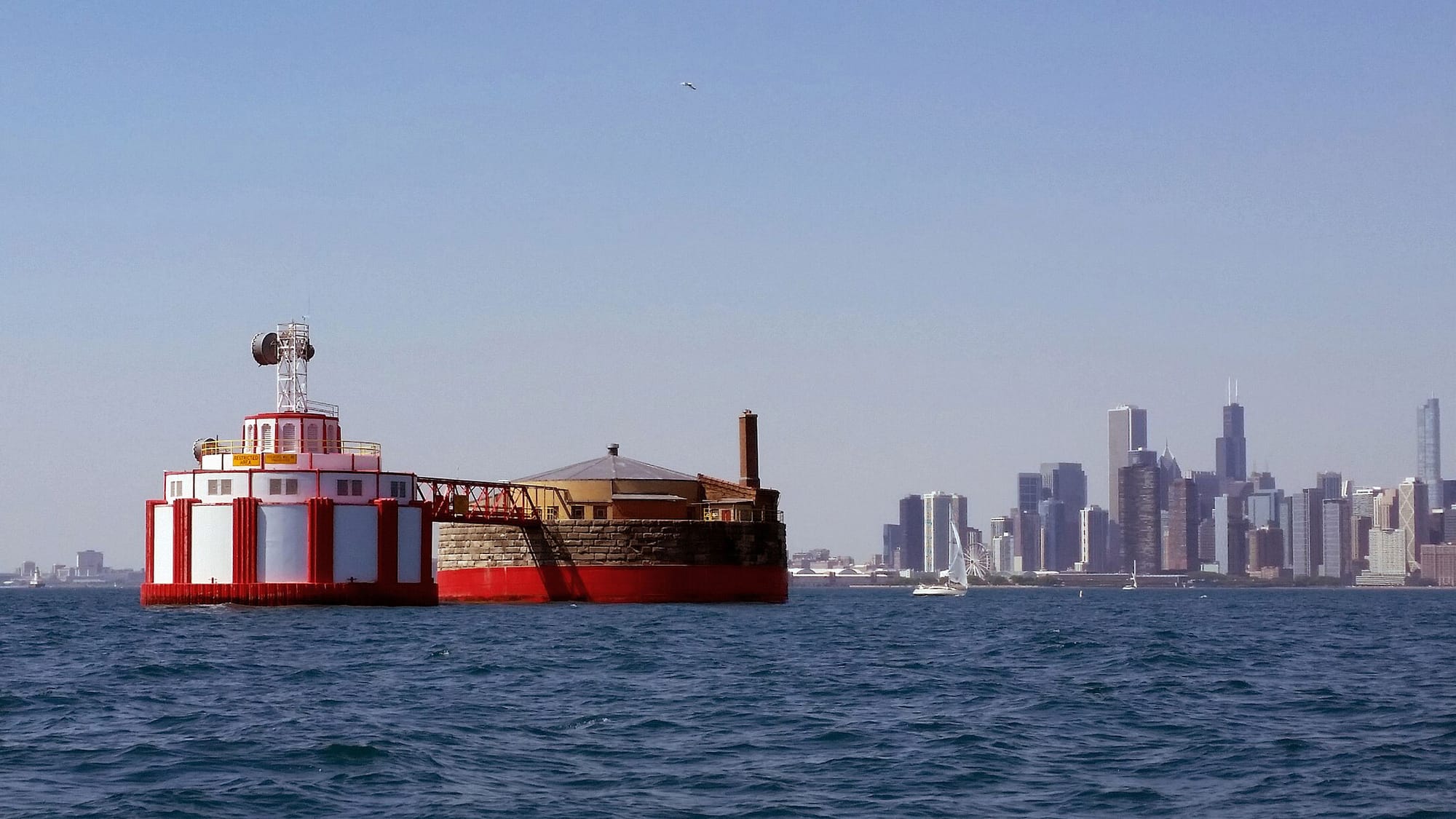Water Cribs

by Colin McGowan
Several miles off Chicago's shore, ghostly even on clear days, there are great mortared structures that drink from Lake Michigan. These six water cribs are not uniform but similar: squat and circular caissons, about a hundred feet in diameter, made of stone or brick, topped with lighthouses warning ships away. Inside they have broad wells that draw water from the lake through tunnels and into treatment plants, from which the water is pumped throughout the city and its dense constellation of suburbs. Startlingly huge, their presence suggests an alien armada come to surveil or invade Chicago. In fact they are one of the reasons it persists in relatively good health.
By 1860, Chicago had so befouled its river with sewage and slaughterhouse runoff that its water supply had become a serious public health risk. According to an 1867 report published in the Chicago Medical Journal, the city, then home to about 200,000 people, had suffered approximately 2,580 cases of cholera between July and November of the previous year, resulting in 1,080 deaths. This was not a new or unanticipated problem. Chicago had endured ruinous cholera epidemics in 1849 and 1854. The installation of a modern sewer system in 1856 had helped, in some respects—the city's boggy streets were less plentifully enriched with human and animal shit—but it also accelerated the progress of that waste into the river, and ultimately into Lake Michigan.
It’s a paywall, but a small one
Read this post and get our weekdaily newsletter for $3 a month
